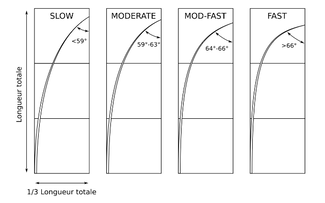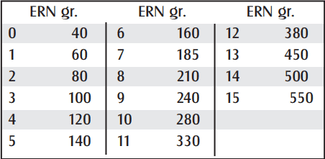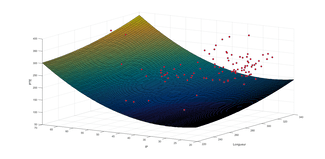
The action of a rod is always a source of discussion filled with rich vocabulary, but too often misunderstood or misused. If you add to that a good dose of marketing, anglers are lost. However, there are measurement systems that can characterise a rod or a blank and can be of great help during a purchase. For Trout & Co, it was unthinkable to carry out rod tests without relying on a precise and reproducible protocol.
Since the information provided by the manufacturers is often not very informative (fast action, progressive, parabolic, fast progressive, fast but soft, extra-fast...), it seems appropriate to implement scientific tests in order to obtain objective numerical information.
The Common Cents System (CCS) method was developed for this purpose by Dr. William "Bill" Hanneman and published in the American magazine RodMaker Magazine in the early 2000s. This is the protocol that will be used by Trout & Co when testing fly rods.
The CCS approach makes it possible to characterise the action simply and objectively, the power and the reactivity of a rod, and therefore to compare different models in an informative way. We will not describe the protocol in detail here, because it would be extremely long, but we will still explain the main principles and especially define the vocabulary used.
General principle
A fishing rod is characterised by 5 main measurable parameters:
- Length
- Weight
- Action
- Power
- Reactivity
The first two are easily measured with basic equipment (a tape-measure and a scale), but for the last three, it's a little more complicated…
Other parameters, such as sensitivity, are difficult to quantify and therefore often appear subjective.
The starting assumption of the CCS states that a rod is loaded when, fixed by its grip on a horizontal support, its tip has moved vertically down one third of the total length.
The power of the rod (Intrinsic Power) then corresponds to the mass needed to make this movement happen.
Furthermore, the rod being loaded this way, the angle formed by the tip and the horizontal axis (Action Angle) will determine the action.
The reactivity, called frequency (Frequency) in the CCS system, is the ability of the rod to oscillate more or less quickly when it is loaded. It's an indication of the best casting time of the rod (for example, high frequency will require a fast casting motion)
But by the way... Why the hell is this method called the Common Cents System? Well, simply because Dr. Hanneman found it convenient to use American 1 cent coins as a unit of weight to load the rods.
Vocabulary and units
The power :
The power of a fly rod is usually expressed by the AFTMA line number that can load the rod (the heavier the line, the more its number increases): in the CCS, the power is determined by loading the rod with the help of 1 cent coins, then a conversion table will convert the number of coins used into a value called the Effective Rod Number (ERN). The ERN will be considered the ideal AFTMA line number for this rod.
But unlike what a manufacturer can write on a rod to indicate its power (a line number), the ERN is not a whole value. A rod with an ERN of 5.8 will be considered a "5 powered rod", knowing that it will be very close to a "line 6" with an ERN of 6.2, for example.
The action :
The action of a fly rod depends on its design method and therefore on the relative bending capacities of its different sections. There are usually 3 types of action for fly rods:
- If bending happens over its entire length, the action is considered slow.
- If bending happens mainly on the upper half of the rod, the action is considered moderate.
- If bending is mainly on the upper third, the action is considered fast.
However, the CCS classifies the rod actions into 4 categories which are determined by the value of the angle that forms the tip of the loaded tip in relation to its initial resting position (not loaded). The larger the angle, the more the action will be called "fast". On the contrary, the smaller this angle, the more the action will be called "slow".

This value is named Action Angle (AA) and the selected sections are:
- Less than 59 °: Slow
- Between 59 and 63 °: Moderate
- Between 64 and 66 °: Mod-Fast
- More than 66 °: Fast
Frequency :
The frequency (CCF, for Common Cents Frequency) of a rod corresponds to the number of oscillations per minute that the tip can carry out when loaded with a specific mass provided by the protocol. It greatly depends on the length of the rod and the weight of the mass attached to the end of it, but also the materials used in the manufacturing of the rod.
One would be tempted to say that a rod that carries out a large number of oscillations per minute will be "fast". Definitely not ! Because the terms "fast" or "slow" are reserved for the characterisation of the Action. We will have to make do with the value of the CCF and talk of high or low frequency.
A high CCF value is a very reactive rod, which demands a fast tempo during casting movements. Conversely, a low frequency rod will require a slower tempo.
And the weight, then?
In fact, the CCS does not take weight into account. At least not directly. The weight of the rod will partly influence the value of the CCF (a heavier tip will decrease the frequency), but excess weight on the grip's side will have no noticeable influence on the indicators of the CCS.
That said, the weight of a rod and the balance of a rod/reel ensemble are considered by many to be a major criteria in their decision-making at the time of purchase. At the end of a long day of fishing, whether with your rod high when euronymphing or by casting a dryfly, the fatigue felt by the angler will depend directly on the weight and balance of the ensemble.
For each rod tested, we will obviously specify its actual weight, but we have also chosen to introduce two additional indicators:
- Balanced Reel Weight (BRW): it is the weight of the spooled reel which makes it possible to balance the ensemble at the very top of the cork of the grip, where in theory will come to rest the angler's index finger.
- Balanced total weight (BTW): it is simply the weight of the rod and the BRW combined. This weight is therefore that of an ensemble that we consider to be "balanced".
The BTW is particularly informative for nymph rods longer than 10' because this notion of balance becomes critical for these important lengths, and in particular it impacts the comfort of fishing. This parameter is much more informative than the weight of the rod alone. Indeed, the difference in weight between two rods is generally that of a few tens of ounces... while the difference in weight of BTW can be several ounces !
Obviously, these measurements determine the choice of reel your rod requires to be balanced.
Test protocol :
1. Loading the rod :
The rod is fixed horizontally by the grip on a fixed support.
The horizontality of the rod is checked using a spirit level, and a plastic bag is suspended by the top ring thanks to a paper clip (the weight of the ensemble will be neglected).
The plastic bag is then filled with 1 cent coins so as to lower the tip by one third of the total length of the rod.
Example: For a 9' (108 inches) rod, add enough weight to the bag so that the end of the tip travels 36" (108/3) vertically. The rod will then be considered "loaded".
2. Determining the power (ERN) :
The number of 1 cent coins present in the bag is called Intrinsic Power (IP).Thanks to the Rosetta Stone table, this value is converted into ERN, which is the ideal line number.
Example: If the bag contains 31 coins, the ERN has a value of 3.57. The ideal line number for the rod is therefore 3.
3. Determining the action (AA) :
Before charging the rod, a long, ultra-light stem is attached to the end of the tip (half a piece of uncooked spaghetti is the ideal tool for this). The angle AA is read by the specific "action analyser" indicator placed behind the rod so that the baseline is horizontal (verified by a spirit level) and the end of the stem fixed to the rod goes through the source of the indicator. We chose to read the angle by adding a tangent to the tip, just like in the following photo:

4. Determining the frequency (CCF) :
The rod being firmly fixed horizontally by the grip, a weight is attached to the end of the tip just before the top guide. This weight is defined by the CCS according to the previously calculated ERN. The weight of the adhesive tape required for attachment is neglected. The rod is then manually loaded again and the tip is abruptly released from the constraint. It then starts to oscillate vertically up and down. The scene is filmed, which allows a posteriori to determine with great precision the time T (seconds) necessary to carry out 20 oscillations.
The CCF is then calculated using the following formula :
CCF = 1200 / T
5. Determining the balanced reel weight (BRW) and the Balanced total weight (BTW) :
A very light reel is installed on the rod and a plastic bag is attached on to the reel. The bag is filled gradually until the ensemble is balanced underneath the extremity of the cork of the grip, where the angler normally holds the rod in fishing action.
The BRW corresponds to the weight of the bag added to that of the reel, and the BTW corresponds to the sum of the weight of the rod and the BRW.
On top of these "calculated" indicators, we will provide simple indicators such as the actual weight of the rod, its number of guides, the type of reel seat, the distance of the stripper guide or even the number of pieces.
Distance of the stripper guide:
Measured from the end of the grip, the distance separating the grip from the stripper guide greatly influences the creation of a slack line, especially when euronymphing. Obviously, the greater this distance, the more the line tends to go back down the guides. On the contrary, a short distance is much more comfortable in fishing because it facilitates the recovery of the slack line, when euronymphing, for example.
Design, components, finish:
The look (finish, type of decoration), components (guides, reel seat, ...) and various characteristics (dimensions of the grip, fighting butt) of each model will be described in a concrete and objective manner. Special attention will be given to the reel seat : downlocking models provide a better balance.
Presenting the results
For each rod tested by Trout & Co, the results will be presented in the form of a table containing the following data:
- Manufacturer
- Series
- Announced length
- Actual length
- Advertised power
- Pieces
- Announced action
- Number of guides
- Distance of the stripper guide
- Reel seat : downlocking, uplocking
- Fighting butt
- Dimensions of the grip
- Advertised weight
- Actual weight
- BRW : balanced reel weight
- BTW : balanced total weight
- IP: the measured power, abbreviation of Intrinsic Power, expressed in number of cents
- ERN: the Effective Rod Number
- AA: Action Angle, the measured action
- CCF: the measured frequency

En plus de ces indicateurs « calculés », nous fournirons des indicateurs simples tels que le poids réel de la canne, son nombre d’anneaux, le type de porte moulinet, la distance du premier anneau ou encore le nombre de brins.
Distance du premier anneau :
Mesurée à partir de l’extrémité de la poignée, la distance séparant la poignée du premier anneau influence grandement la formation d'un ventre dans la soie, notamment lorsqu'on pêche canne haute à la nymphe. Évidemment, plus cette distance est importante, plus la soie a tendance à redescendre dans les anneaux. Au contraire, une faible distance est beaucoup plus confortable en action de pêche car elle facilite la récupération de l'excédent de bannière, en nymphe au fil par exemple.
Design, composants, finition :
Le look (finition, type de déco), les composants (anneaux, porte moulinet, liège,...) et diverses caractéristiques (dimensions de la poignée, talon de combat) de chaque modèle seront décrits de façon concrète et objective. Une attention particulière sera accordée au porte moulinet : ceux dont l'écrou de serrage se situe au dessus du moulinet confère un meilleur équilibre à la canne une fois montée.
Présentation des résultats
Pour chaque canne passée au banc de test de Truites & Cie, les résultats seront présentés sous forme d’un tableau contenant les données suivantes :
-
Marque
-
Modèle
-
Longueur annoncée
-
Longueur réelle
-
Nombre de brins
-
Nombre d’anneaux
-
Distance du premier anneau
-
Type de porte moulinet
-
Talon de combat
-
Dimensions de la poignée
-
Poids annoncé
-
Poids mesuré
-
PME : le Poids du Moulinet à l’Equilibre
-
PTE : le Poids Total à l’Equilibre
-
IP : la puissance mesurée, abréviation de Intrinsic Power, exprimée en nombre de Cents
-
ERN : l’Effective Rod Number
-
AA : Action Angle, l’action mesurée
-
CCF : la fréquence mesurée
To learn more about the Common Cents System:
http://www.sexyloops.co.uk/iB_html/uploads/post-13-97034-CommonCents_Oct07.doc



